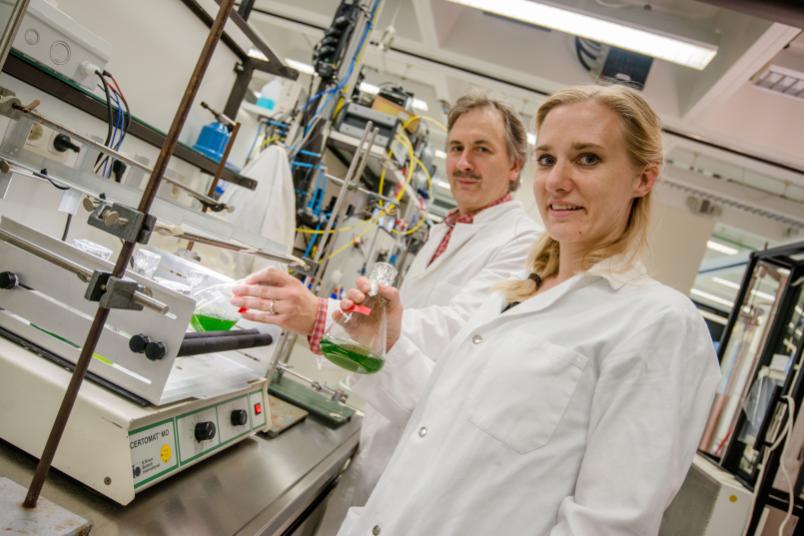
Biology
Evolution of a bacterial enzyme in green algae
Green algae produce hydrogen, a potential energy source of tomorrow. But how did they acquire the enzymes for that purpose?
A new jigsaw piece in the evolution of green algae has been identified by researchers at Ruhr-Universität Bochum together with colleagues from Max Planck Institute in Mülheim an der Ruhr. They analysed the hydrogen-producing enzyme of a phylogenetically old alga. Its properties were radically different from those of analogous enzymes in more recent algae. The team headed by Vera Engelbrecht and Prof Dr Thomas Happe from the research group Photobiotechnology in Bochum outlines their results in the journal “Biochimica et Biophysica Acta”.
Docking to photosynthesis
Hydrogen-producing enzymes, so-called hydrogenases, have originally occurred in numerous bacteria. Green algae, too, contain such enzymes, using them for the light-driven generation of hydrogen. “The origins of this enzyme in algae had long been a mystery,” says Vera Engelbrecht. “We have now analysed a link in evolutionary history of hydrogenases that had previously been missing.”
Algae which are relatively young in evolutionary terms contain specialised hydrogenases that show significant differences to the original varieties in bacteria. They are smaller and have a specific surface used for docking to the cell’s photosynthesis machinery. To this end, they bind to ferredoxin, a molecule that mediates electron transfer. Thus, they are able to produce hydrogen using light energy.
Different from young algae
The phylogenetically old alga Chlorella variabilis has likewise the ability for light-driven generation of hydrogen. The researchers from Bochum and Mülheim isolated and characterised the Chlorella hydrogenase. Unlike in young algae, it shares many characteristics with the original bacteria enzyme and is unable to bind to the electron carrier ferredoxin.
“We found the results surprising,” explains Thomas Happe. “Chlorella appears to still have an original metabolic pathway, which has changed completely in phylogenetically younger algae.” The question why the more recent algae have developed a specialised hydrogenase in order to dock to photosynthesis via ferredoxin remains to be answered. “We are currently attempting to identify the precise metabolic connection of chlorella hydrogenase and to detect photosynthetic protein complexes in the organism that are as yet unknown,” says Happe.